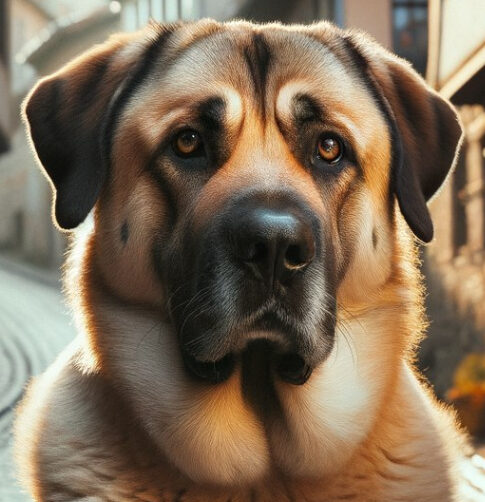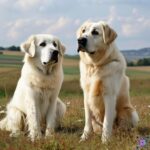Introduction
The Anatolian Shepherd, a remarkable breed renowned for its resilience and adaptability, has captured the admiration of dog enthusiasts and farmers alike. Known for its extraordinary ability to withstand harsh temperatures, this breed has evolved into an ideal working companion in challenging climates. Whether enduring scorching heat or freezing cold, the Anatolian Shepherd’s unique characteristics enable it to thrive where other breeds may falter.
In this comprehensive guide, we will explore the Anatolian Shepherd’s resilience to extreme weather conditions. From its historical origins to its physiological adaptations, we’ll uncover what makes this breed a natural survivor in some of the world’s most unforgiving environments. Let’s dive into the extraordinary world of the Anatolian Shepherd.
Definition and Overview
What is an Anatolian Shepherd?
The Anatolian Shepherd, also known as the Kangal Shepherd Dog, hails from Turkey and is one of the oldest livestock guardian breeds. Bred to protect flocks from predators, these dogs possess a unique blend of physical strength, keen intelligence, and unwavering loyalty.
Resilience to Harsh Temperatures
Adapted over centuries to the extremes of the Anatolian Plateau, this breed has developed several traits that allow it to endure both searing summers and frigid winters. Its ability to maintain performance and comfort in harsh climates makes it invaluable in agricultural and domestic settings.
Historical Background
Origins in Anatolia
The Anatolian Shepherd traces its roots back over 6,000 years to the Anatolian Plateau. This semi-arid region, with its drastic temperature fluctuations, shaped the breed’s hardy nature. Farmers needed dogs that could not only protect livestock but also thrive in the same harsh conditions.
Role in Livestock Protection
Historically, Anatolian Shepherds have been used to guard sheep and goats from predators like wolves and bears. Their robust constitution and adaptability ensured their success, solidifying their reputation as reliable working dogs.
Key Features or Components
Physical Characteristics
- Coat Type:
- The Anatolian Shepherd has a dense, double-layered coat that provides insulation against both heat and cold.
- The outer coat is water-resistant, while the undercoat traps air to maintain body temperature.
- Size and Build:
- Large and muscular, with males weighing 110-150 pounds and females 80-120 pounds.
- Their size aids in physical endurance and protection against predators.
- Color Variations:
- Typically fawn-colored with a black mask, though other variations exist.
- Coat colors often help them blend into their environment, providing camouflage.
Behavioral Traits
- Intelligence and Independence:
- Highly intelligent and capable of making autonomous decisions, essential for livestock guardianship.
- Protective Instincts:
- Loyal and alert, the breed is naturally wary of strangers but affectionate with its family.
- Low Energy in Extreme Climates:
- Adopts energy-conserving behaviors in extreme temperatures to avoid overheating or overexertion.
Benefits and Importance
Adaptability in Extreme Climates
- Hot Climates:
- Their light-colored coat reflects sunlight, and their panting mechanism efficiently dissipates heat.
- Cold Climates:
- The thick undercoat traps warmth, allowing them to remain active in sub-zero temperatures.
Livestock Protection
- Their ability to remain outdoors year-round makes them invaluable for protecting livestock in remote areas.
- Farmers rely on the breed’s endurance to safeguard herds without requiring constant human supervision.
Low Maintenance
- Despite their size, Anatolian Shepherds are relatively low-maintenance, requiring minimal grooming and thriving on simple diets.
Challenges or Drawbacks
Temperament
- Their independent nature can make training challenging for inexperienced owners.
- Without proper socialization, they may become overly protective.
Space Requirements
- Anatolian Shepherds need ample space to roam, making them unsuitable for small apartments or urban living.
Health Concerns
- Common issues include hip dysplasia and hypothyroidism. Regular veterinary check-ups are essential.
Future Trends or Developments
Increasing Demand
- As climate change leads to more extreme weather conditions, demand for resilient breeds like the Anatolian Shepherd is expected to rise.
Genetic Research
- Ongoing studies aim to understand the genetic traits that contribute to their resilience, potentially benefiting other breeds and species.
Conservation Efforts
- Preservation of the breed’s purity is critical, especially as its popularity grows beyond its traditional roles.
User-Focused Insights
Tips for Owners
- Proper Shelter:
- While they can endure extreme temperatures, providing shaded areas in summer and windproof shelters in winter is recommended.
- Balanced Diet:
- High-quality protein sources and proper hydration are essential, especially in extreme climates.
- Regular Exercise:
- Moderate exercise helps maintain their health without overexerting them.
Common Questions
- Are Anatolian Shepherds good with children?
- Yes, with proper training, they are protective and gentle with children.
- Do they require special grooming?
- Weekly brushing is sufficient, though more frequent grooming is needed during shedding seasons.
FAQ Section
1- How long do Anatolian Shepherds live?
They typically live 11-13 years with proper care.
2- Can Anatolian Shepherds be house pets?
While they can adapt to indoor living, they thrive best in environments with ample outdoor space.
3- How do they handle predators?
Their size, strength, and protective instincts make them highly effective against predators, including wolves and bears.
4- What climates are they best suited for?
They are well-suited for both hot and cold climates, thanks to their adaptive coat and physiological traits.
Conclusion
The Anatolian Shepherd’s ability to withstand harsh temperatures is a testament to its evolutionary history and remarkable adaptability. Whether safeguarding livestock or serving as loyal companions, these dogs exemplify resilience and dedication. For those seeking a breed capable of thriving in challenging environments, the Anatolian Shepherd is an unmatched choice.

